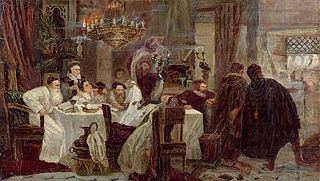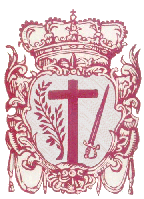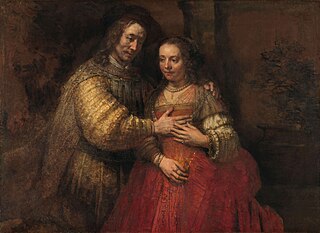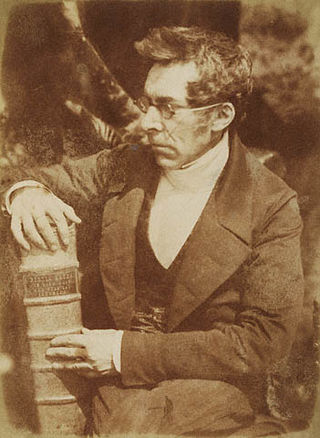
Marranos is one of the terms used in relation to Spanish and Portuguese Jews who converted or were forced by the Spanish and Portuguese crowns to convert to Christianity during the fifteenth and sixteenth centuries, but continued to practice Judaism in secrecy or were suspected of it, referred to as Crypto-Jews. "Crypto-Jew" is the term increasingly preferred in scholarly works, instead of Marrano.

The Portuguese Inquisition, officially known as the General Council of the Holy Office of the Inquisition in Portugal, was formally established in Portugal in 1536 at the request of its king, John III. Although Manuel I had asked for the installation of the Inquisition in 1515 to fulfill the commitment of his marriage with Maria of Aragon, it was only after his death that Pope Paul III acquiesced. In the period after the Medieval Inquisition, it was one of three different manifestations of the wider Christian Inquisition, along with the Spanish Inquisition and Roman Inquisition. The Goa Inquisition was an extension of the Portuguese Inquisition in colonial-era Portuguese India.

Abraham Zacuto was a Castilian astronomer, astrologer, mathematician, rabbi and historian who served as Royal Astronomer to King John II of Portugal.
Spanish and Portuguese Jews, also called Western Sephardim, Iberian Jews, or Peninsular Jews, are a distinctive sub-group of Sephardic Jews who are largely descended from Jews who lived as New Christians in the Iberian Peninsula during the few centuries following the forced expulsion of unconverted Jews from Spain in 1492 and from Portugal in 1497. They should therefore be distinguished both from the descendants of those expelled in 1492 and from the present-day Jewish communities of Spain and Portugal.
The de Castro surname is used by a Sephardic Jewish family of Portuguese, Spanish and Italian origin. Soon after the establishment of the Portuguese Inquisition, members of the family emigrated to Bordeaux, Bayonne, Hamburg, and various cities in the Netherlands. Their descendants were later found scattered throughout Turkey, Egypt, Holland, Germany, England, Italy, United States and Madras.

The history of the Jews in Portugal reaches back over two thousand years and is directly related to Sephardi history, a Jewish ethnic division that represents communities that originated in the Iberian Peninsula.

Miguel Barrios was a poet and historian from a converso family who joined the community of Spanish and Portuguese Jews in Amsterdam. He was born in Montilla, Spain and died in Amsterdam. Miguel was the son of Simon de Barrios—who also called himself Jacob Levi Canizo—and Sarah Valle. His grandfather was Abraham Levi Canizo.
Isaac (Fernando) Cardoso was a Jewish physician, philosopher, and polemic writer.
Bonet de Lattes was a European Jewish physician and astrologer. He is known chiefly as the inventor of an astronomical ring-dial by means of which solar and stellar altitudes can be measured and the time determined with great precision by night as well as by day. He lived in the latter part of the fifteenth century and the beginning of the sixteenth.

Jacob Henriques de Castro Sarmento was a Portuguese estrangeirado, physician, naturalist, poet and Deist.
Isaac de Castro Tartas was a Marrano and Jewish martyr.

The Revd Dr Abraham Capadose or Capadoce was a Dutch physician and Calvinist writer. A Jewish convert to Christianity from 1822 onwards, he was part of the Dutch Réveil circle that also included Isaac da Costa and Willem de Clercq.
Henriques is a Portuguese surname meaning Son of Henrique (Henry). The Henriques family has many branches, each with a somewhat different surname. In 16th century Portugal, dozens of New Christian families used the name singly or in combination with others, such as Henriques de Castro, Cohen Henriques Eanes, Henriques de Souza, Henriques de Sousa, Henriques Faro, Mendes Henriques, Gabay Henriques, Lopes Henriques, Gomes Henriques, Henriques da Costa, Henriques da Granada, Henriques Coelho, and many more. Once they left Portugal and reverted to Judaism, they took more Jewish first names and often inserted Jewish tribal designations, such as Cohen and Israel, just before "Henriques", such as Cohen Henriques and Israel Henriques.
Portuguese in the Netherlands are the citizens or residents of the Netherlands whose ethnic origins lie in Portugal.
David ben Abraham de Castro Tartas was a Portuguese Jewish printer in Amsterdam. Between 1662 and 1701 his press printed the Gazeta de Amsterdam, a newspaper of the exiled Jewish community.

On 5 December 1496, King Manuel I of Portugal signed the decree of expulsion of Jews and Muslims to take effect by the end of October of the next year.
Abraham Curiel (1545-1609), alias Jeronimo Nunes Ramires, was a physician and the son of the wealthy merchant Jacob Curiel of Coimbra of Coimbra. Curiel is described in several sources as "one of the greatest doctors of his time."

The Aboab family is an old and distinguished Western Sephardic family, originally from Aragon, Spain. The family has produced several notable rabbis, scholars, physicians, and merchants - especially achieving prominence in Amsterdam, Venice and Hamburg. The progenitor of the family is Rav Abraham Aboab, who, in 1263 was given a tower in Altea, Aragon with the surrounding dairy farms along with a heraldic achievement by James I of Aragon. Some have suggested that Aboab is a spelling of the Arabic "Abdelwahab", which means "the benefactor’s servant", while others have stated that it derives from the town of Umm al-Abohav in Tunisia.
Manuel Batista Perez was a Spanish-born merchant, and multi-millionaire active in Africa, Europe, the Americas and Asia. Though Spanish, Manuel called himself Portuguese because Spanish New Christians were not allowed in the New World. Perez became extremely wealthy, according to the Jewish Encyclopedia, Perez amassed a fortune which would have been the equivalent of $1,000,000 in 1906 Perez moved to Lima with his wife and three children. He was sent with a large sum to invest for his brothers-in-law back in Spain. He was born to a Marrano family, that is to say a Sephardic Jew whose family outwardly conformed to Catholicism for socio-political reasons, but privately practiced Judaism.








